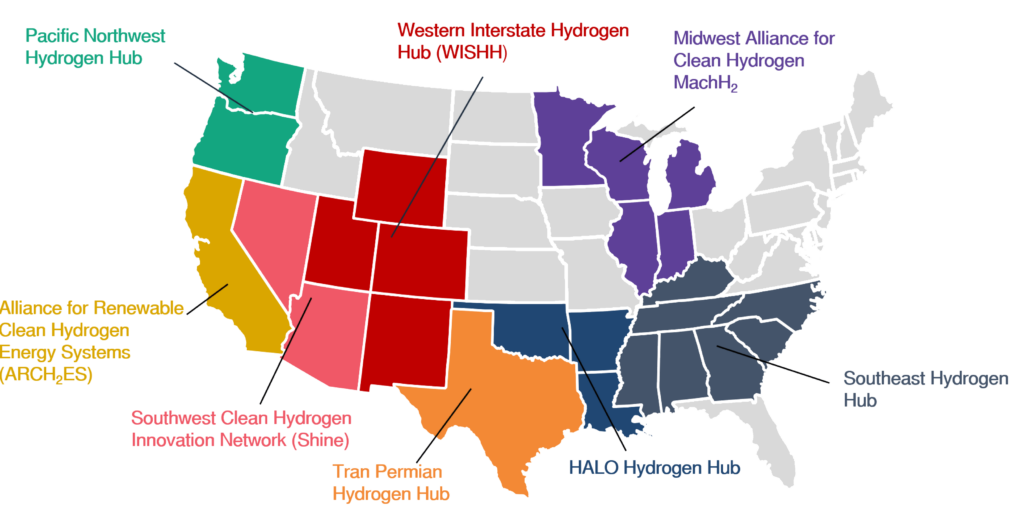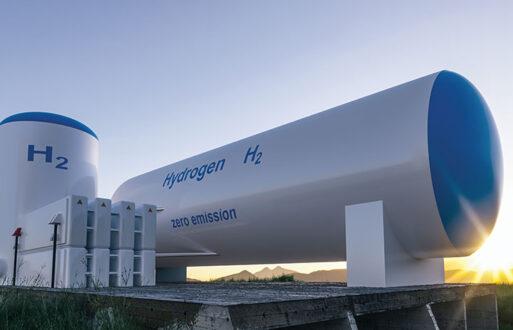Are you excited to see Oklahoma lead the charge toward a more sustainable energy future?
I had the pleasure of attending a keynote address by Ken Wagner, the executive director of the Hamm Institute of American Energy and previous Oklahoma secretary for Energy and Environment, at INFOCUS Conference 2023. He spoke about the HALO Hydrogen Hub, a multi-state partnership that aims to produce hydrogen from all sources, and I found it so inspiring.
I was especially interested in Oklahoma’s role in energy innovation, from oil to renewables. I’m eager to learn more about this exciting new project and see where it takes us. So keep reading to join me on this journey toward a more sustainable future.
What is the HALO Hub

In response to the Infrastructure Investment and Jobs Act (IIJA), which will invest up to $7 billion (about $22 per person in the U.S.) into the development of regional clean hydrogen hubs, Governors Asa Hutchinson of Arkansas, John Bel Edwards of Louisiana, and Kevin Stitt of Oklahoma announced a bipartisan three-state partnership, known as the HALO Hydrogen Hub, to compete for funding outlined in IIJA.
The HALO Hub project prioritizes the production of hydrogen in all forms, including from renewable, low and carbon-neutral energy and natural gas feedstock, prioritizing proper care and treatment of the remaining carbon-dioxide waste in deep geologic permanent sequestration or transportation of the CO2 for utilization. The project has received support from various stakeholders, including the state government, industry partners, and academic institutions.
During the keynote, Wagner mentioned that the HALO Hydrogen Hub had put in its application on April 6, 2023, for the competitive regional hydrogen hub application. He commended the work that everyone put into the application and noted that it was quite an accomplishment.
Oklahoma's energy story
Innovation is a significant part of Oklahoma’s energy story. To understand where the state is going in terms of energy, you have to understand where it’s been. Oklahoma became known for energy in 1898 with one of the very first commercially profitable oil wells, the Nellie Johnstone, discovered in Bartlesville, Oklahoma. Over its lifetime, the well pumped over 100,000 barrels of oil and set Oklahoma on its journey in energy.
The state also has produced many innovators and giants who developed oil and energy, such as:
- Frank and Wayne Phillips, who started Phillips Petroleum
- W. Marland, an American oil tycoon and politician who served as the 10th governor of Oklahoma
- Paul Getty, an American industrialist and founder of Getty Oil, which became one of the largest oil companies in the world
- Bill Skelly, a former senior executive at Phillips Petroleum known for his contributions to the oil and gas industry, particularly in the areas of refining and marketing
- Thomas Gilcrease, an American oilman and entrepreneur who owned and operated several oil and gas fields in Oklahoma and Texas and was a pioneer in the use of advanced drilling techniques that allowed for greater oil extraction
- and Harold Hamm, who founded Continental Resources and played a crucial role in advancing horizontal drilling and hydraulic fracturing techniques. His significant contributions earned him recognition as one of TIME magazine’s “100 Most Influential People in the World” and led to the establishment of the Hamm Institute for American Energy at OSU through a $50 million donation.
What happened in Oklahoma in the energy industry helped shape the world’s map and economy and, in the process, helped win two world wars. Some of the most iconic oil companies were headquartered in Oklahoma, such as Philips Petroleum, Conoco, Texaco, Sinclair, and Williams Companies.
Hydrogen's importance to the future of energy
Oklahoma may not be able to reclaim the designation of the world oil capital, but the state can reclaim some of the greatest innovations and inventions in history as it relates to energy. One of those innovations is hydrogen. According to Wagner, hydrogen is a crucial part of the future of energy. Hydrogen can be used as a fuel for transportation, heating, and power generation, among other applications.
The HALO Hub is essential in the state’s efforts to move toward a more sustainable future. The project aims to produce hydrogen using renewable energy, which will help reduce greenhouse gas emissions and create a more sustainable energy mix. Wagner noted that the project had received support from various stakeholders, including the state government, industry partners, and academic institutions.
Oklahoma's leadership in renewable energy
Oklahoma is a leader in wind energy, with over 12 gigawatts of installed wind capacity. The state has also made significant investments in solar energy and is home to several large solar farms. The renewable energy sector in Oklahoma has created jobs and economic development opportunities and has helped diversify the state’s energy mix.
In line with Oklahoma’s ongoing efforts to embrace sustainable energy solutions, Enel North America‘s recent decision to establish a major solar photovoltaic manufacturing facility in Inola, Oklahoma, is a significant milestone. This state-of-the-art factory, set to begin construction in the fall of 2023, reinforces Oklahoma’s commitment to a greener and more resilient future while creating numerous direct permanent jobs by 2025.
I feel lucky to live in Oklahoma during this exciting time and to have heard Ken Wagner’s inspiring keynote address about the HALO Hydrogen Hub at INFOCUS 2023. I believe this project is a pivotal moment in Oklahoma’s journey toward a sustainable energy future. It’s exciting to see hydrogen being recognized as a crucial component of that future, and even more, so that the HALO Hub aims to produce it using renewable energy. As an Oklahoman, I’m proud of our history of energy innovation, and I’m thrilled to see the HALO Hub continuing that legacy.
Visit our Hydrogen page to learn how our industry-leading software is positioned to automate and optimize the management of hydrogen assets within ISO markets and regional hydrogen hubs.






